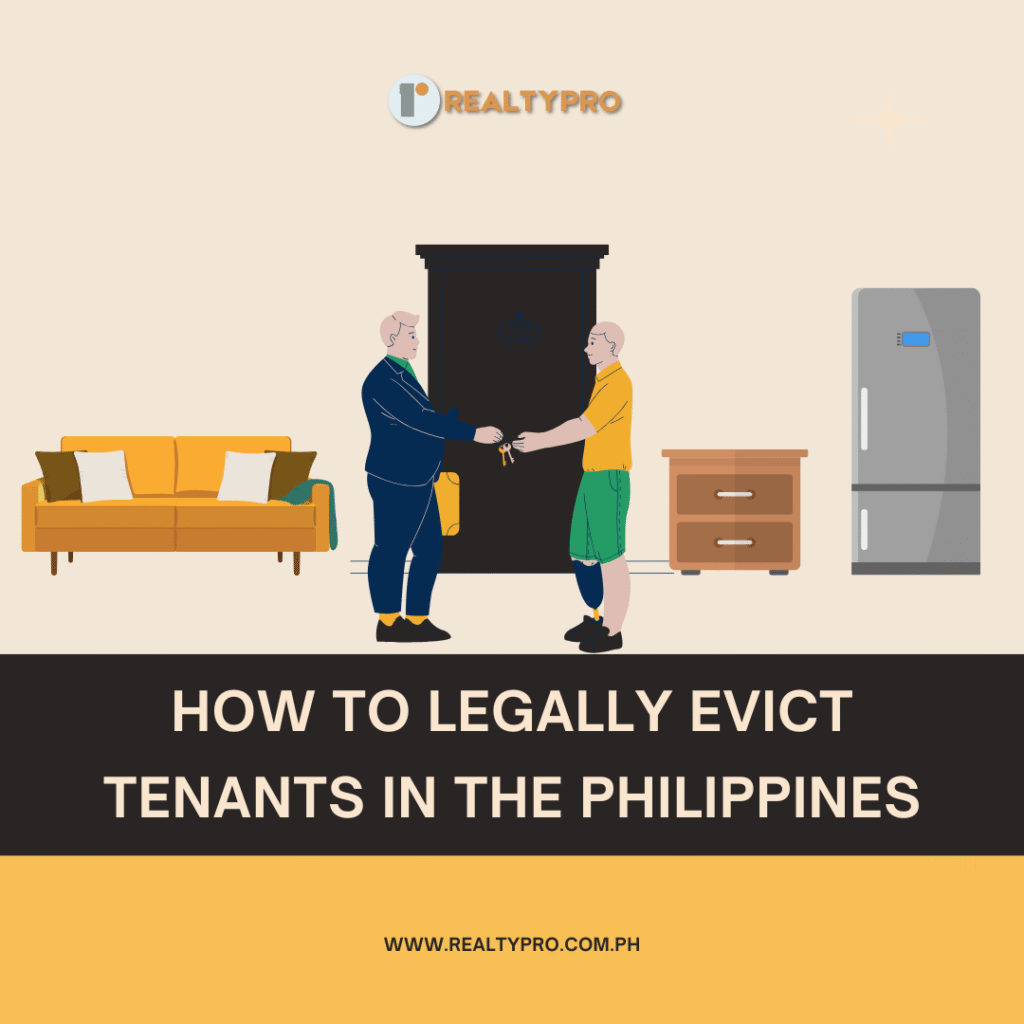How to Legally Evict Tenants in the Philippines
Understanding Your Rights and Responsibilities as a Landlord
Owning a rental property can be rewarding—until you encounter a tenant who stops paying rent, damages your property, or violates your agreement. While eviction might seem like the logical next step, it’s not as simple as telling your tenant to leave. In the Philippines, eviction follows a strict legal process under the Rent Control Act (Republic Act No. 9653) and the Rules of Court, ensuring that both landlords and tenants are protected from abuse.
If you’re a property owner, here’s a step-by-step guide on how to legally evict tenants in the Philippines.
1. Know the Valid Grounds for Eviction
Before taking any action, make sure your reason for eviction is legally valid. Under Philippine law, you can evict a tenant only for the following reasons:
• Non-payment of rent for at least three consecutive months
• Expiration of the lease contract, with proper notice given
• Subleasing without the landlord’s consent
• Owner’s legitimate need to use the property for personal or family residence
• Necessary repairs or demolition, provided proper permits and notice are given
• Breach of lease terms, such as using the property for illegal activities
Having a solid legal ground prevents future disputes and ensures your case holds up in court.
2. Serve a Formal Notice to Vacate
If the tenant refuses to comply or resolve the issue, the next step is to serve a written notice to vacate. This must clearly state the reason for eviction and give the tenant a reasonable time to move out—typically 30 days. The notice should be dated, signed, and preferably delivered with proof of receipt (via registered mail or in person with witnesses).
3. File a Case for Unlawful Detainer
If the tenant still won’t leave after the notice period, you’ll need to file an Unlawful Detainer case with the Municipal Trial Court (MTC) where the property is located. This legal action formally seeks the court’s order to evict the tenant and regain possession of your property.
Here’s what you’ll need to prepare:
• A copy of the lease agreement
• Proof of ownership (land title or tax declaration)
• The notice to vacate and proof that it was received
• Evidence supporting your ground for eviction (e.g., unpaid rent receipts)
Once filed, the court will issue a summons to your tenant. If they don’t respond on time, you may request a default judgment in your favor..
4. Attend the Court Hearing and Await the Decision
The MTC will schedule a hearing to allow both sides to present their arguments. The court will then decide whether eviction is justified. If the ruling favors you, the court will issue a Writ of Execution allowing the sheriff to enforce the eviction.
Remember, only the court has the authority to evict a tenant. Self-help actions—like changing locks or cutting utilities—can lead to criminal or civil liabilities.
5. Handle the Eviction Professionally and Humanely
Evictions can be stressful for both landlord and tenant. Even with a court order, it’s best to handle the process calmly and professionally. Respect the tenant’s dignity and personal belongings, and try to settle outstanding issues amicably. You may also seek assistance from the Barangay to mediate if tensions arise.
Conclusion
At the end of the day, hindi naman talaga gustong umabot sa eviction ang mga landlords. Pero kapag kailangan na talaga, dapat ito ay gawin the right and legal way. Tandaan: may proseso sa batas na kailangang sundin para hindi ka mapasama. Kung maayos ang komunikasyon, respeto, at documentation mo, mas mabilis mong makukuha ang hustisya—at ang peace of mind na karapat-dapat sa’yo bilang may-ari.
Kaya kung nasa ganitong sitwasyon ka, huwag agad padalos-dalos—consult a lawyer, follow the legal process, and always act with fairness. Sa huli, maayos na relasyon at tamang proseso pa rin ang tunay na susi sa property management.
For Legal and Real Estate Assistance, Click Here
#rltypro

